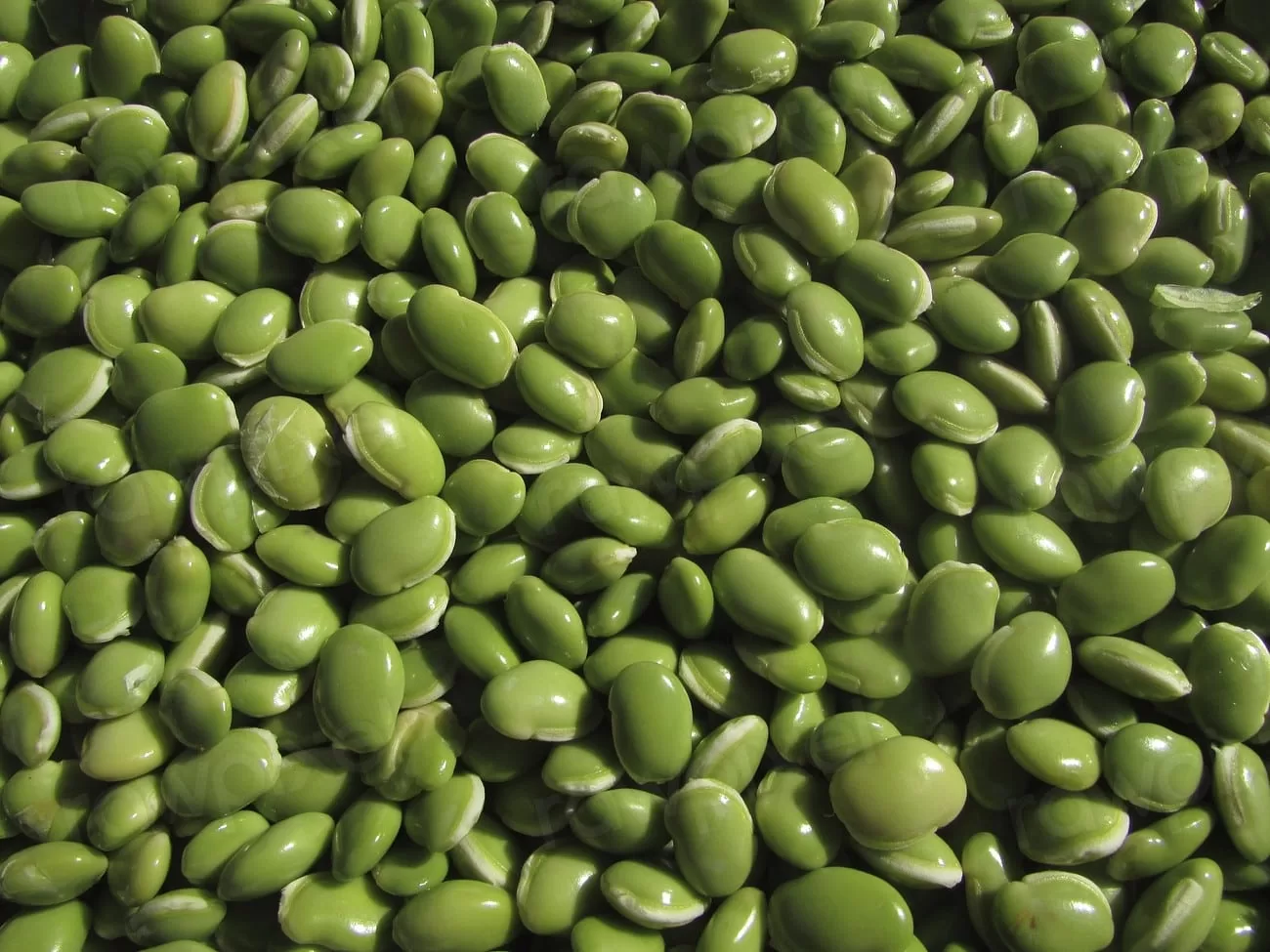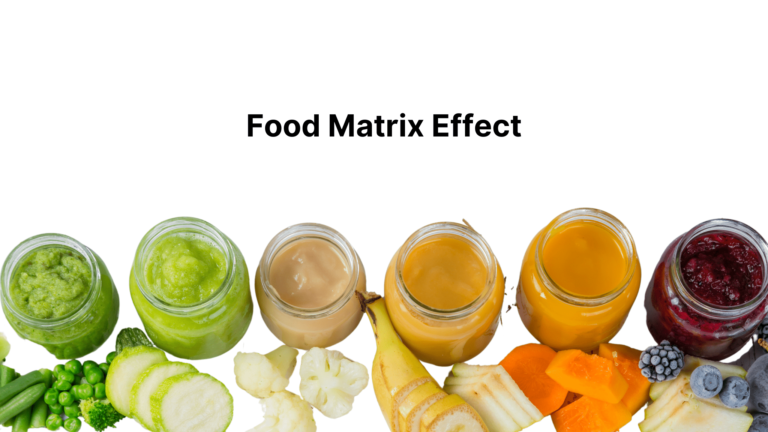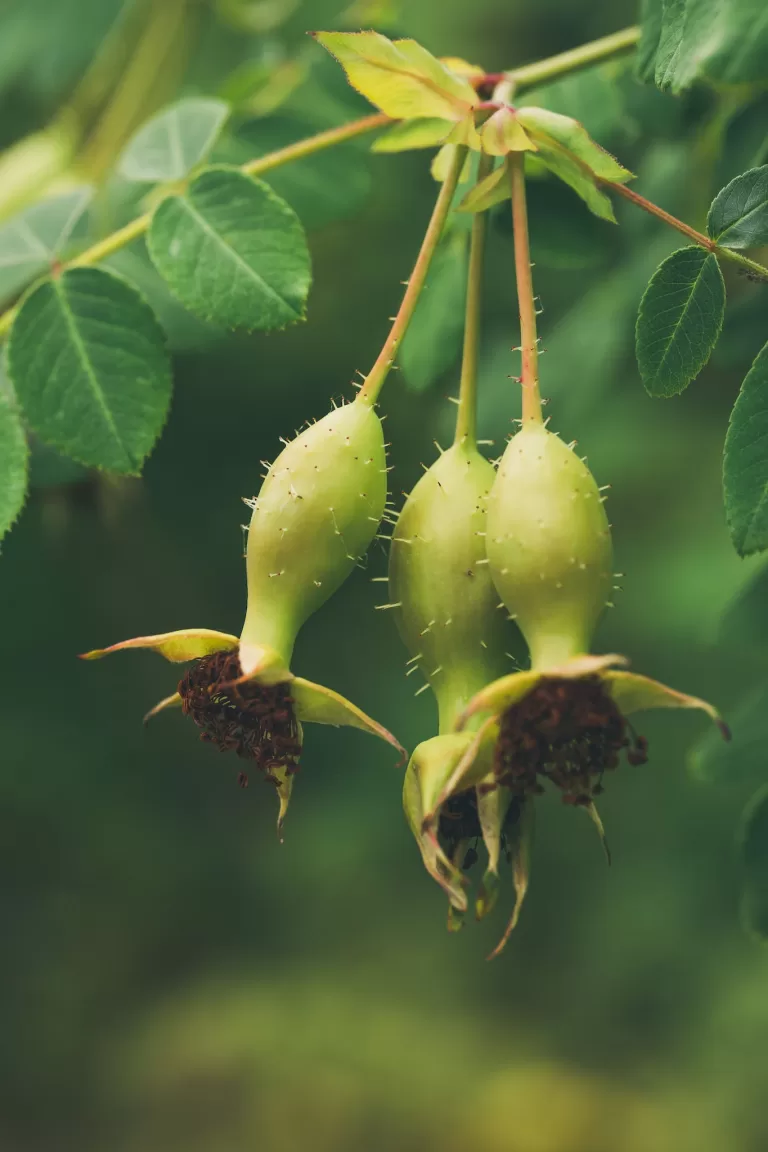A Legumes List For Bioactive Rich Dietary Value
The Legumes list typically includes lentils, beans, and peas.
However, two legumes are considered exceptionally rich for their nutritional and bioactive constituents. This article focuses on two valuable legumes from this family: the Green Mung bean and the Red lentil.
Legumes are well-known for their high-value phytotherapeutic properties and are considered the “gold standard” for promoting overall wellness in some traditional sciences.
They are associated with promoting cardiac wellness, improving gut health, reducing inflammation and being supportive of the immune system due to their positive influence on the gut.
Key Points In This Article
This article examines these key points: the advantages of legumes depend on their preparation and consumption methods to increase their bioavailability; an overview of lentils and discusses the profile of Red Lentils and Green Mung Beans, explaining why and how lentils are abundant in compounds and referring to some important case studies.
Legumes List
Legumes are a type of plant that belongs to the family Fabaceae, and they typically produce seeds in pods.
The types of legumes include beans, lentils, peas, and chickpeas, among others. Legumes are rich in protein, fiber, vitamins, and minerals, making them an important component of a healthy diet.
They are also a good source of complex carbohydrates and have a low glycemic index, which means they can help regulate blood sugar levels.
Additionally, legumes are known for their ability to fix nitrogen in the soil, which makes them an important crop for sustainable agriculture.
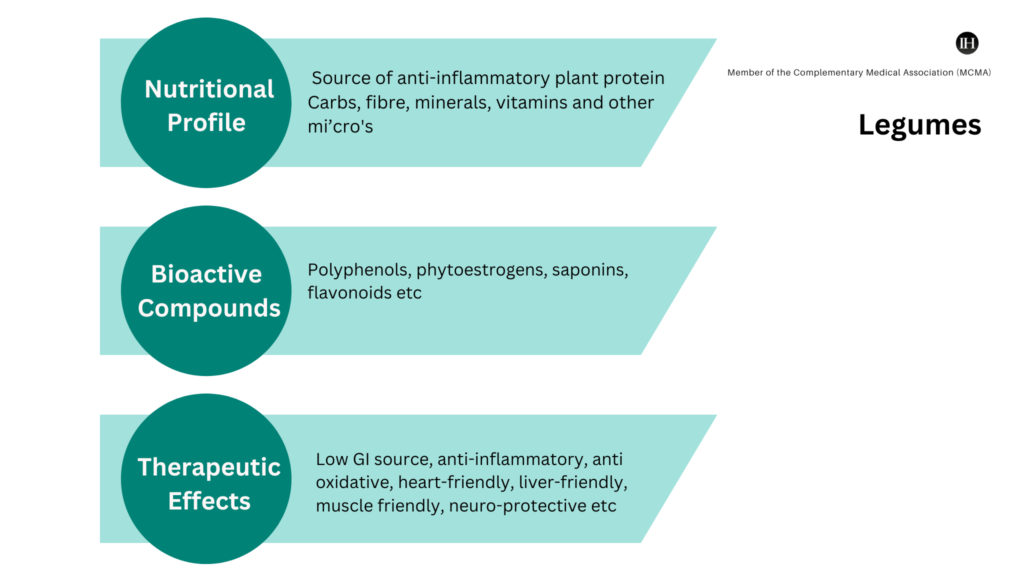
Role of Legumes In Nutritional & Therapeutic Diet
Moreover, legumes are renowned for their myriad health benefits, extensively studied in traditional and contemporary scientific research.
Legumes are effective in reducing and mitigating lifestyle-related cardiovascular disease risk.
An Example Case Study: Polyphenols
A study by Ganesan and Xu 2017 found that eating lentils with polyphenols can benefit your health. Lentils can help reduce the risk of heart disease by lowering blood pressure.
Study Key Findings
The study showed that lentils contain substances that can reduce the effects of angiotensin I-converting enzyme (ACE) and have antioxidant, ACE-inhibitory, and cardioprotective properties. It also states the following:
- Anti-hyperlipidemic (cholesterol and triglycerides) effects.
- Anti-hyperhomocysteinemia (Homocysteine is an amino acid produced by the body during the breakdown of protein) and some individual’s levels can be high.
- Anticholesterolemic effects, which means they can reduce the risk of hypertension and coronary artery diseases. In (vivo and in vitro) studies, lentils have been shown to reduce total cholesterol, triglycerides, and low-density lipoprotein (LDL) levels.
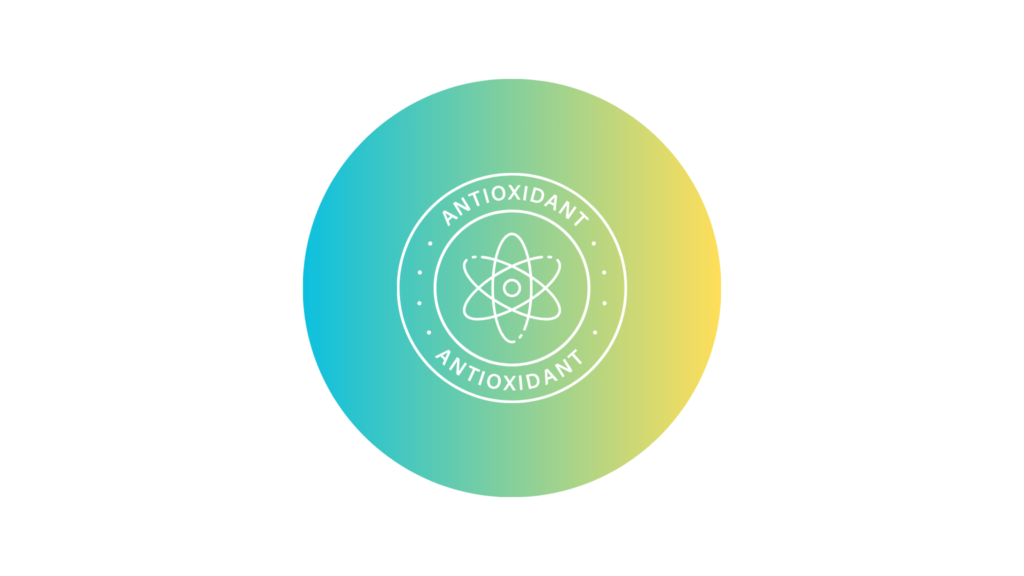
Legumes Glycemic Effect
Legumes have been shown to reduce glycemic index and hyperlipidemic effects, raising high-density lipoprotein (HDL) levels and reducing blood glucose levels.
Similarly, their body positive effects can largely be attributed to soluble fibre within legumes. This aids in reducing cholesterol levels and alleviating inflammation, both recognised as risk factors for heart-related issues.
However, various lifestyle factors, including diet, environment, and physical activity, can influence the effectiveness as a whole and should, therefore, be taken into account.
Legumes & Blood Sugar Regulation
Another effect of legumes is their ability to regulate blood sugar levels.
Most legumes have a low glycemic index (Glycemic index-net ranging between 0-55).
Specifically, Green Mung Bean and Red Lentils fall into a low GI food category. This means they release glucose into the bloodstream slowly and steadily, helping to prevent spikes in blood sugar levels. This makes them an excellent food choice for people who require better choices of food that involve low GI or those at risk of developing blood sugar-related issues.
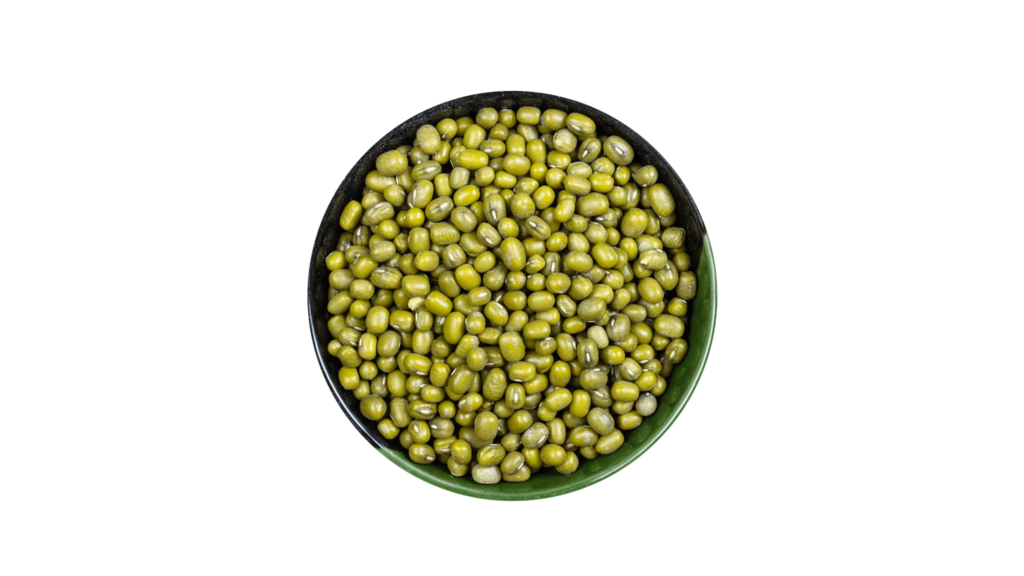
Green Mung Bean
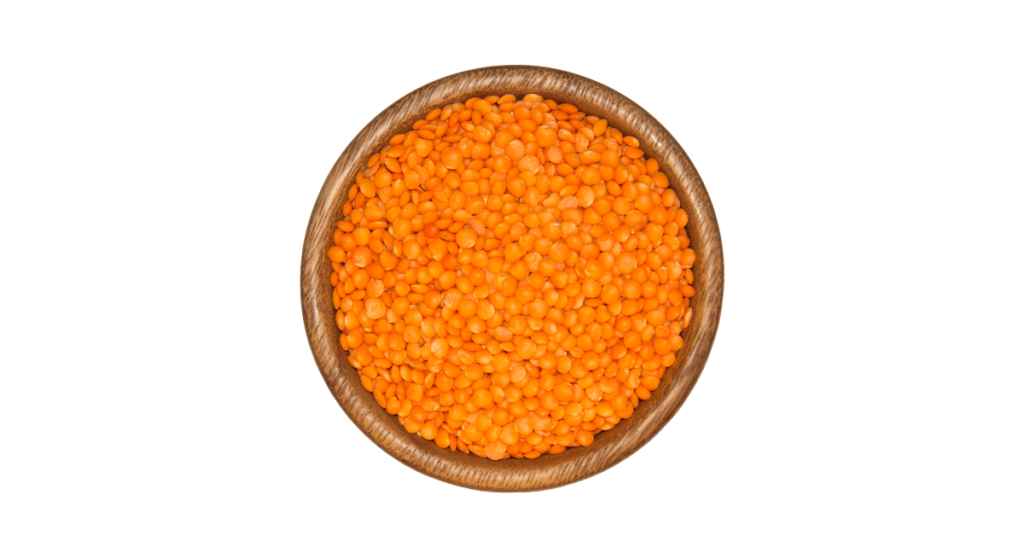
Red Lentil
Legumes In Healthy Weight Management
Legumes are an excellent food for weight management. They are low in calories, high in fibre, and protein-rich, which helps keep you fuller for longer, reducing the likelihood of overeating.
Most importantly, they are dense in nutrients.
They are also a good source of complex carbohydrates, which provide sustained energy and prevent cravings for sugary snacks.
For example, (207g) Green Mung Bean provides Protein 49.5g, Energy 3000 kJ and Carbohydrates 103g. The protein and energy bioavailability is substantial.
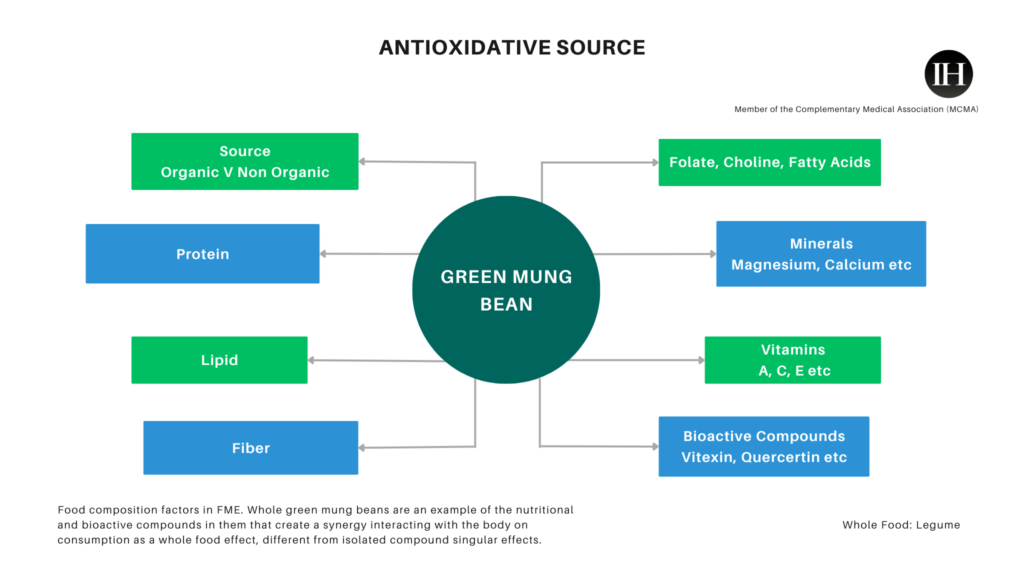
Legumes For Gut Health
Legumes contain prebiotic fibre, which feeds the good bacteria in the gut, promoting a healthy balance of microorganisms. This can lead to improved digestion, better nutrient absorption.
Typically, legumes are pre-soaked between 2-24 hours prior to cooking and depending on the legume and then thoroughly cooked after washing. This helps to remove anti-nutrient, phytic acid and any lectin on their outer shell.
Legumes & Prebiotic Activity
According to Johnson et al. (2013), lentils are prebiotic-rich whole-food legumes that contain nutritionally significant amounts of prebiotic carbohydrates. Their study suggests that a 100 g serving of lentils may provide over 13 g of prebiotics.
Referring back to, “Polyphenol-Rich Lentils and Their Health Promoting Effects” (2017), Ganesan and Xu (International Journal of Molecular Sciences) also suggest that Lentils are a good source of prebiotics, containing 12.3-14.1 g/100 g of dry lentils.
These prebiotic carbohydrates help to maintain a healthy gut microbial environment, thereby preventing gut-associated diseases.
Lentils are also low in fat and sodium but high in potassium content, making them an ideal dietary choice for individuals with obesity and cardiovascular issues.
Other dietary properties are also stated in this study are detailed below.

Iron & Other Nutrients
Lentil seeds are an excellent vegetable source of iron, and studies have shown that their consumption in cooked form can prevent iron deficiency anaemia.
Lentils are also rich in several minerals such as zinc, copper, manganese, molybdenum, selenium, and boron, as well as vitamins like thiamine, riboflavin, niacin, pantothenic acid, pyridoxine, folate, α, β and γ tocopherols, and phylloquinone.
Vitamin K
While the average quantity of vitamin K in lentils is 5 μg/100 g, the daily requirement of this vitamin in adults is about 80 μg.
However, the low content of vitamin K makes lentils safe for individuals with Cardiovascular disease upon anticoagulant treatment as suggested by the former study by Ganesan and Xu.
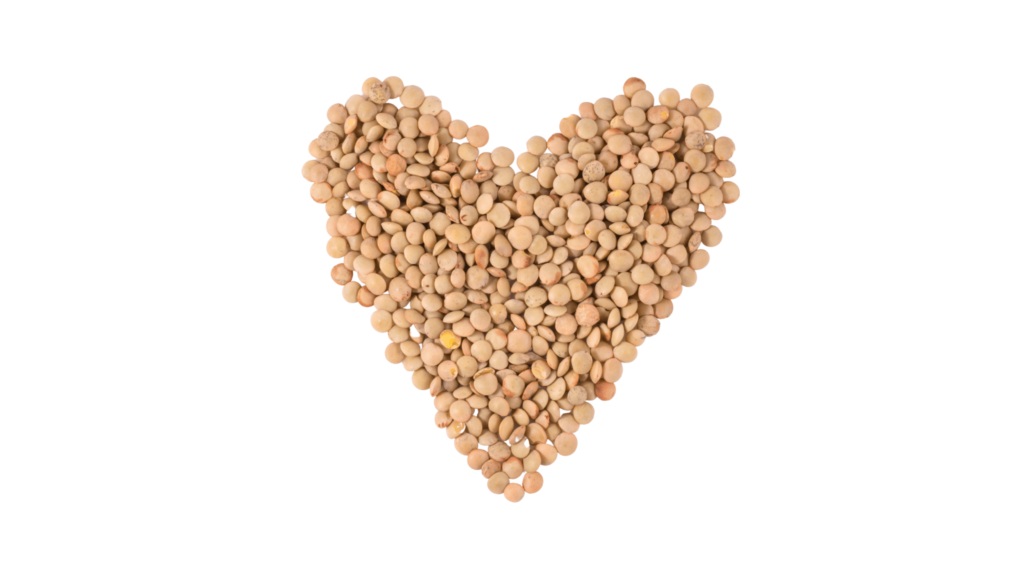
Overall Consensus On Legumes
Broadly, legumes offer an excellent source of nutrition due to their rich profile and subsequent therapeutic effects. In combination with other ingredient such as vegetables, grains etc they can be complete meals.
- High in protein
- Low in fat
- Rich in fiber
- Source of enzymes
- Rich in vitamins and minerals
- Promote phytotherapeutic effects
In the next section, we will delve into the nutritional benefits of two significant types of legumes, namely, Green Mung Beans and Red Lentils.
1. Green Mung Bean (GMB) Vigna Radiata
The green mung bean belongs to the legume family and is widely recognized as a highly nutritious food. It has been extensively studied in traditional science and is known for its remarkable therapeutic effects.
The bean is rich in phytochemical constituents such as, antioxidants – polyphenols, and flavonoids, which possess potent anti-inflammatory and anti-carcinogenic properties.
Moreover, the green mung bean is an excellent source of plant-based protein, fibre, and a wide range of essential nutrients for optimal health and wellness.
GMB Sprouts: Another way to use GMB is by sprouting the bean. When you germinate the bean, it further enhances its bioavailability on digestion.
GMB Key Nutritional Elements
Correspondingly, the value of bioactive constituents according to the US Department for Agriculture specifies that 1 cup of Mung bean (mature seeds, raw) contains the following approximate amounts of value;
Protein 49.5g, Energy 3000 kJ, lipid (fat) 2.38g, Carbohydrates 103g, Dietary fiber 33.7g, Sugars 13.7g
| Calcium 273 mg | Iron 14 mg |
| Magnesium 391 mg | Phosphorous 760 mg |
| Potassium 2590 mg | Sodium 31 mg |
| Zinc 5.55 mg | Copper 1.95 mg |
| Manganese 2.15 mg | Selenium 17 ug |
| Vitamin C (total ascorbic acid) 9.94 mg | Thiamin 1.28 mg |
| Riboflavin 0.482 mg | Niacin 4.66 mg |
| Pantothenic acid 3.95 mg | Vitamin B-6 0.791 mg |
| Folate 1290 ug | Choline 203 mg |
| Vitamin A 12.4 ug | Beta Carotene 141 ug |
| Vitamin E (alpha-tocopherol) 1.06 mg | Vitamin K 18.6 ug |
| Fatty acids, total saturated 0.72 g | Fatty acids monounsaturated 0.333 g |
GMB Therapeutic Properties
Among Green Mung Beans properties reside phenolic acids, potent antioxidants that aid in countering detrimental free radicals within the body.
Additionally, mung beans possess flavonoids, endowed with both anti-inflammatory and anti-carcinogenic attributes. Tannins to find their place in these legumes, showcasing formidable antiviral and antibacterial effects.
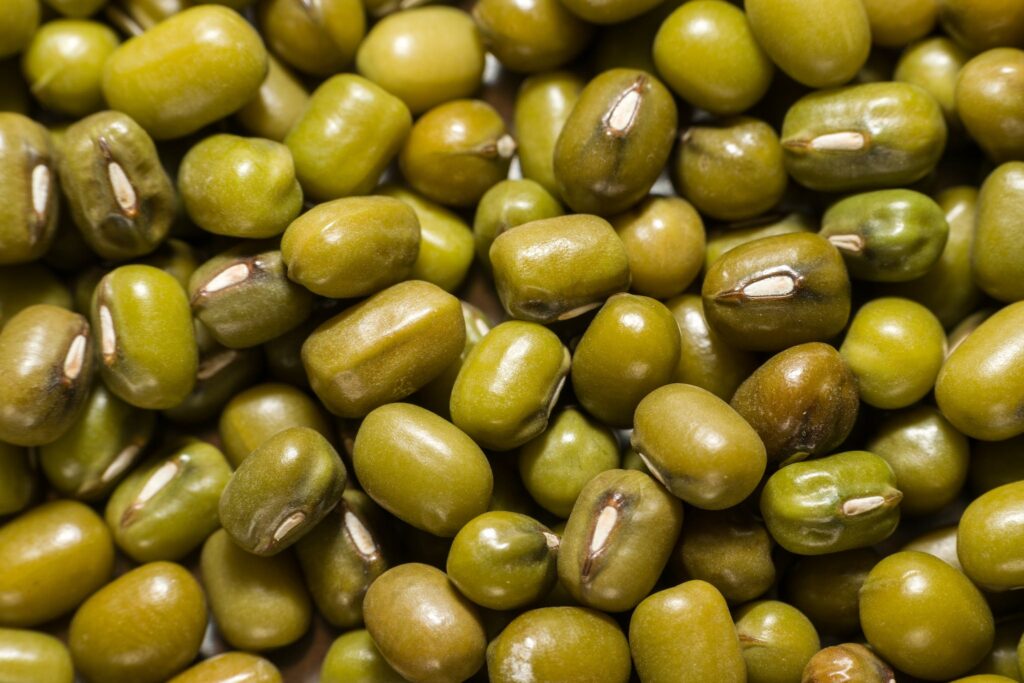
Finally, mung bean saponins contribute to cholesterol reduction and an immune system friendly food.
(GMB) Example Case Study
According to a study by Hou et al. (2019), a double-blind placebo-controlled clinical trial was carried out. The trial confirmed the positive effects of mung bean protein on glucose metabolism in 45 prediabetes individuals.
A test group was instructed to consume a total of 2.5 g mung bean protein twice daily for 12 weeks. Results showed that mung bean protein stabilized fasting plasma glucose and insulin levels, as compared to the placebo group.
Additionally, triglyceride levels significantly decreased in the individuals with hyperlipidemia.
These findings indicated that mung bean protein may improve insulin sensitivity by decreasing the accumulation of visceral fat. Especially in obese individuals.
Pre-Soaking In Water For Bioavailability Uptake (GMB)
It is vital for green mung bean to be pre-soaked in clean water before cooking.
To encourage bioactivity of the bean, soak it overnight in water before cooking it the next day. This process helps to activate the bean’s enzymes and nutrients, making them more readily available for absorption by the body.
Informational (Audible) Video
Green Mung Bean & Therapeutic Properties
2. Red Lentil (RL) Lens Culinaris
Number 2 on our list of exceptional legumes are Red Lentils.
Red lentils are a type of small legume with a distinctive pinkish-red hue. The lentil is versatile to use in several different ways, such as in soups, stews, and curries.
In particular, these lentils are known for their valuable protein content and rich dietary therapeutic qualities. Red lentils are also a great source of fibre and can be part of a healthy and balanced diet.
Red lentils are a common soup for a disturbed gut and digestive system in Ayurvedic principles.
(RL) Key Nutritional Elements
According to USDA, one cup (192g) of raw red or pink lentils, as cited in (Link), contains the following nutritional values:
Other important micronutrients: Threonine 1.72 g, Isoleucine 2.07 g, Leucine 3.48 g, Lysine 3.34 g, Phenylalanine 2.36 g, Tyrosine 1.28 g, Valine 2.38 g, Arginine 3.71 g, Histidine 1.35 g, Alanine 2 g, Aspartic acid 5. 3g, Glutamic acid 7.43 g, Glycine, 1.94 g, Proline 2 g, Serine 2.21 g.
| Energy | 2880 kJ |
| Protein | 45.9 gram |
| Fiber, total dietary | 20.7 gram |
| Calcium, Ca | 92.2 gram |
| Iron, Fe | 14.2 gram |
| Magnesium, Mg | 113 mg |
| Phosphorus, P | 564 mg |
| Potassium, K | 1280 mg |
| Sodium, Na | 13.4 mg |
| Zinc, Zn | 6.91 mg |
| Copper, Cu | 2.5 mg |
| Manganese, Mn | 3.3 mg |
| Vitamin C, total ascorbic acid | 3.26 mg |
| Folate, total, Folate food, DFE | 392 ug |
| Vitamin A, RAE | 5.76 ug |
| Carotene, beta | 67. 2 ug |
| Vitamin A, IU | 111 IU |
(RL) Therapeutic Properties
Red lentils are an excellent source of phytotherapeutic properties, which are derived from its bioactive compounds such as polyphenols, flavonoids, and phytosterols.
These compounds have been found to exhibit several health benefits including antioxidant, anti-inflammatory, and anti-carcinogenic properties.
These legumes are also rich in dietary fibre, which helps in regulating digestion, maintaining satiety, and reducing the risk of chronic diseases such as Cardiovascular diseases, diabetes and obesity.
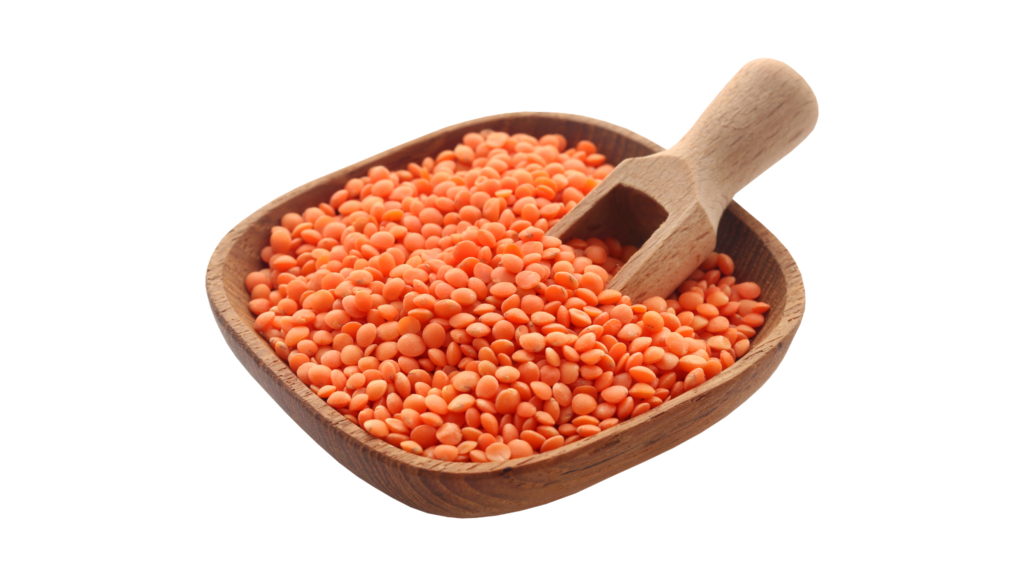
Moreover, red lentils are packed with essential vitamins and minerals such as iron, folate, and potassium, making them an excellent source of nutrition for vegetarians and vegans.
Their rich profile makes them a great liquid or soup-based nutritional source for individuals that need highly bioactive friendly sources. Moreover, the lentil is exceptionally gut-friendly and healing.
(RL) Example Case Study
According to Mustafa et al. (2022), lentil seeds have been found to have potential health benefits, including reducing the risk of various types of cancers such as colon, thyroid, liver, breast, and prostate cancers.
Lentils are rich in polyphenols, which have demonstrated chemo-preventive activities by taking up carcinogens, detoxifying, binding to DNA, and improving the fidelity of DNA repair.
Furthermore, an epidemiological study conducted on 90,630 women has shown that the consumption of polyphenol-rich lentils can reduce the risk of breast cancer.
The full study can be read on this link: https://doi.org/10.3390/ph15101225.
Pre-Soaking In Water For Bioavailability Uptake (RL)
Soaking red lentils in clean water 1-2 hours before cooking helps activate their bioavailability. Secondly, red lentils are softer seeds compared to others and cook much quicker comparatively.
Water soaking helps to reduce the amount of anti-nutrients in the lentils, such as phytic acid, which can inhibit the absorption of certain nutrients.
Additionally, soaking red lentils can also help to improve their texture and flavour when cooked.
Summary
To summarise, a Legumes list that can promote a bioactive diet and encourage personal well-being is worth considering due to their rich therapeutic properties.
- Among the vast array of legume varieties, we have identified two in particular – the Green Mung Bean and Red Lentil.
- Both of these legumes have exceptional nutritional profiles, including antioxidant, antibacterial, anti-fungal, antiviral, cardioprotective, anti-inflammatory, nephroprotective, antidiabetic, anticarcinogenic, anti-obesity, hypolipidemic, and chemopreventive activities.
- These bioactive compounds are body friendly, and excellent nutritional source. They are fairly easy to incorporate as part of a well-balanced therapeutic diet. Several studies as cited in this article recognise the therapeutic effects of legumes when consumed as part of a well-balanced diet.
Suitability & Precautions
Generally, legumes are safe to consume; this depends on cooking methods. However, precautions and personal responsibility are crucial. To make an informed choice, seek the advice of a professional.
This post is for informational purposes only and does not constitute professional advice.
InteGratiive Insights
Nutraceutical “A nutraceutical is defined as any substance that is a food or part of a food and provides medical or health benefits, including the prevention and treatment of disease (DeFelice, 1994)
Science Direct
References in this article
United States Department of Agriculture: https://fdc.nal.usda.gov/fdc-app.html#/food-details/174284/nutrients
United States Department of Agriculture: https://fdc.nal.usda.gov/fdc-app.html#/food-details/174256/nutrients
Ganesan K, Xu B. Polyphenol-Rich Lentils and Their Health Promoting Effects. Int J Mol Sci. 2017 Nov 10;18(11):2390. doi: 10.3390/ijms18112390. PMID: 29125587; PMCID: PMC5713359.
Johnson, Casey & Thavarajah, Dil & Combs, Gerald & Thavarajah, Pushparajah. (2013). Lentil (Lens culinaris L.): A prebiotic-rich whole food legume. Food Research International. 51. 107-103. 10.1016/j.foodres.2012.11.025.
Hou D, Yousaf L, Xue Y, Hu J, Wu J, Hu X, Feng N, Shen Q. Mung Bean (Vigna radiata L.): Bioactive Polyphenols, Polysaccharides, Peptides, and Health Benefits. Nutrients. 2019 May 31;11(6):1238. doi: 10.3390/nu11061238. PMID: 31159173; PMCID: PMC6627095.
Amarowicz R, Estrella I, Hernández T, Dueñas M, Troszyńska A, Kosińska A, Pegg RB. Antioxidant activity of a red lentil extract and its fractions. Int J Mol Sci. 2009 Dec 23;10(12):5513-5527. doi: 10.3390/ijms10125513. PMID: 20054484; PMCID: PMC2802008.

